At age 12, he fled the Taliban to try to save his family. Then he faced years in US custody
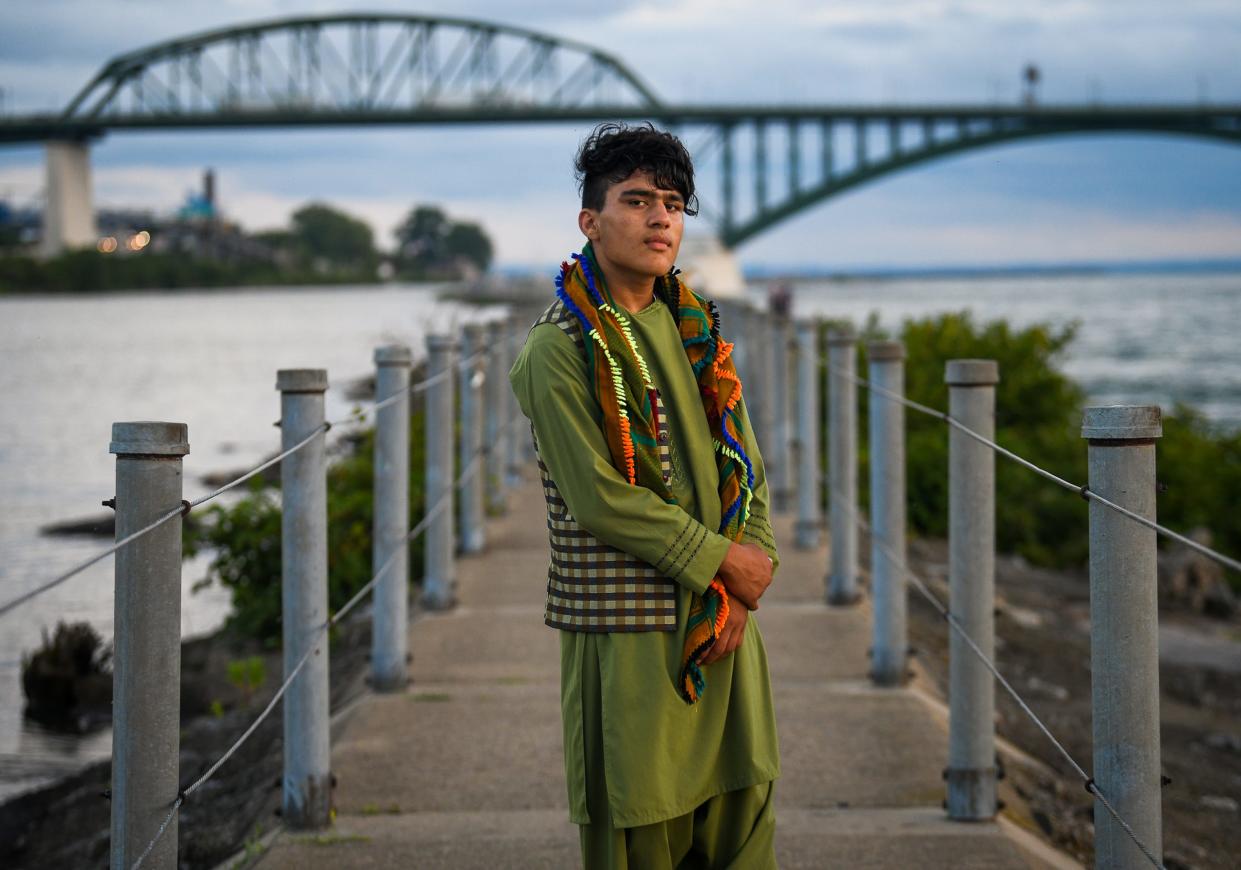
Under the cloak of night, as Taliban gunmen roamed the streets outside, 12-year-old Mohammad Halim Shams quietly said goodbye to his sleeping parents, slipped out of the Kabul home he shared with his nine brothers and sisters and headed to Hamid Karzai International Airport.
His goal: Get on a flight out of Afghanistan, and find a way to get his family out, too.
The Taliban had just taken over the Afghan capital and, though he was only 12, Mohammad knew what was to come. The Islamic fundamentalist group would soon prohibit girls from returning to secondary schools. They would unleash extrajudicial killings on former Afghan government and military employees. They would darken the future for him and his siblings.
Carrying just a Samsung cellphone, his tazkira, or Afghan identity card, and 400 afghanis (less than $5), Mohammad forged through the city streets. The airport was already collapsing into chaos and bloodshed that would last for weeks. Thousands of Afghans would try desperately to evacuate. Taliban fighters guarding the gates would fire their rifles toward the throngs. A suicide bomber would trigger a blast amid a crowd and kill nearly 200 people.
Mohammad would take his chances.
Through fate and more than a little luck, he made it onto a flight that month, August 2021, and soon reached the safety of the United States. But for children like Mohammad, the journey to safety did not end there. It only began.
Mohammad’s story reveals a rarely seen consequence of the American exit from Afghanistan. Children who fled without their parents arrived in the U.S. as unaccompanied minors, making them perhaps the most vulnerable evacuees of all.
By the time Mohammad reached a federally run shelter in New York a few months later, the U.S. government was more than halfway through the process of reuniting thousands of Central American families with their children, who had been taken from them under the Trump administration’s “zero tolerance” policy. He joined more than 1,600 Afghan children who were beginning to stream, virtually unknown, into the same system of federal custody.
The Afghan children's future would be clouded by the international complexities of reconnecting them with families who now live under Taliban rule.
Even after two years in the United States, hundreds of those children may still be waiting.
As of late March, the latest date for which figures are available, 184 children in long-term foster care remained separated from their families, according to the U.S. Department of Health and Human Services. Fifty-five children still lived in federal shelters.
The story of Mohammad, who is now 14, is based on interviews with him and his family, immigration attorneys and advocates for migrant youth, as well as documents and statistics provided to USA TODAY by the Department of Health and Human and Services and the U.S. State Department.
When Mohammad first arrived, he was alone. He spoke no English. He had no way to know what would happen. And for nearly the next two years, he would plead for one thing: His family.
Fleeing Kabul
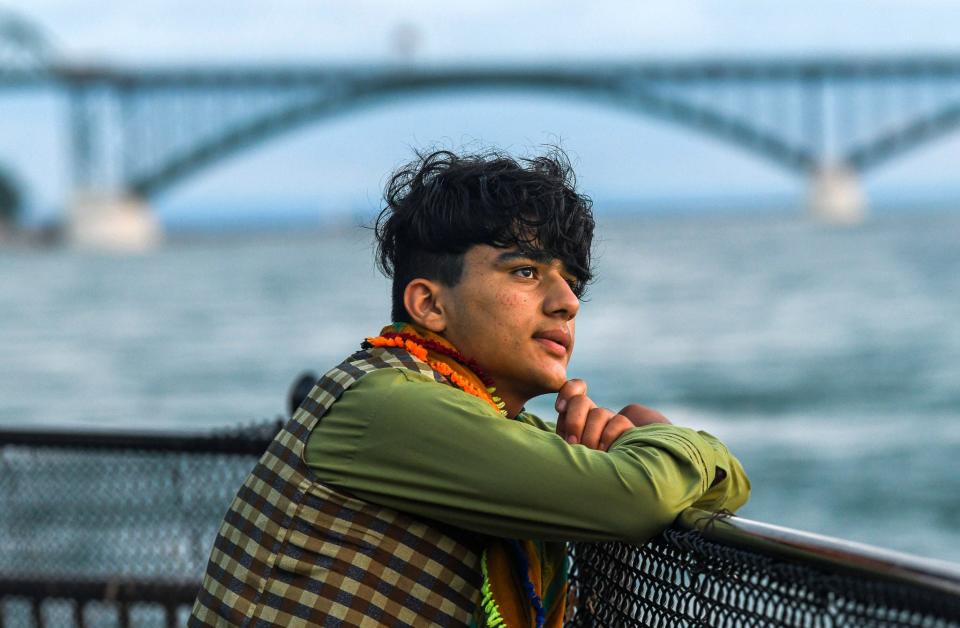
Mohammad had worked for much of his young life, first as a shoe shiner and mechanic’s helper at an auto shop, and then at a Kabul hospital, cleaning bathrooms and mopping floors, providing meager means for his family to allow his younger siblings to get an education. Sara, five years younger, dreamed of someday becoming a doctor. Irshad, his brother who was two years younger, wanted to be a teacher. Mohammad never learned to read or write, and he didn’t want his siblings going down the same route.
“I wanted a good life for them,” he said.
As the Taliban swept into Kabul, Mohammad felt those dreams dissolving. Word quickly spread that the armed group would impose draconian restrictions on society and shut down schools for girls. After a late shift at the hospital one night in August 2021, Mohammad made the decision to leave his home country. He didn’t tell his parents out of fear that they would try to talk him out of it, he said.
He reached the Kabul airport in the darkness of night, waded across a sewage-strewn canal and waited nearly a week with hordes of other Afghans outside a U.S. checkpoint for a chance to get inside, he said. He ate what he could and drank water only when others offered it to him. When a commotion broke out at the gate, Mohammad said, he darted past the military police and onto the airport grounds.
Inside, he was placed in a room with other unaccompanied children. After another day of waiting, he was placed on a flight to Qatar. Mohammad spent four months on a U.S. military base there with other youth. Initially, he was told he would be sent to Canada. But on the day the flight was scheduled to leave, authorities told him the flight to Canada had been canceled. He’d be going to the United States instead.
Mohammad didn’t speak English, and any knowledge he had about his new host country was limited to a few scraps of information gleaned from family and friends in Kabul.
“All I knew about the United States was that they spoke English and they’re not Muslim,” he said. But he readily agreed to go.
“I just wanted to get my family out of Afghanistan,” he said. “I wanted to go anywhere.”
Special report: Staying could mean death. The escape nearly killed her. How one woman fled Afghanistan for freedom.
‘Their lives are on hold’
When the Taliban rumbled into the Afghan capital two years ago this week, ending two decades of American control in the country, Afghans who had worked for the U.S. government and were most at risk of retaliation were given priority to evacuate in the form of special immigrant visas. But in the crush, many people without visas, especially young children, were allowed through checkpoints and placed on massive C-17 military planes bound for Europe and the U.S.
Of the more than 100,000 Afghan nationals who have been assisted in relocating to the United States since August 2021, records from the Department of Health and Human Services’ Office of Refugee Resettlement show the country has taken in more than 1,600 unaccompanied minors.
As federal officials scrambled to accommodate them, shelters struggled to keep up with the children’s language and cultural needs. Many of the shelters lacked Pashto or Dari interpreters – the two most commonly spoken languages in Afghanistan, advocates said.
Many of the children were also traumatized from what often was a tragic separation of their families at Kabul’s airport, said Mary Giovagnoli, senior counsel for policy and advocacy at Kids in Need of Defense, an advocacy group that assists migrant children. Unlike the thousands of unaccompanied minors who arrive at the U.S.-Mexico border each year from Central and Latin America, many of whom willingly come alone, many of the Afghan children believed they were evacuating with their families but were separated during the violence at the airport, she said.
Unaccompanied youth from Latin America often have some relatives already in the United States waiting to take them in, but the Afghan children arrived with no family connections. Reuniting them with family members often still in Afghanistan or other countries became an immigration challenge involving a myriad of state agencies, Giovagnoli said.
“Afghan minors have watched children from other countries depart facilities to reunite with family and wonder why they remain behind,” she said of those in the custody of the Office of Refugee Resettlement. “They inevitably suffer from ‘detention fatigue’ and can feel lost and that their lives are on hold.”
The shelters, she noted, could make that feeling worse. They had programs meant for children from Central America, who might wait days or weeks before connecting with a relative in the U.S. But Afghan children ended up waiting more than a year.
“ORR custody,” she said, “simply isn’t designed for yearlong stays.”
More from Afghanistan: After six deployments, he was ready to leave the war. It followed him to Pennsylvania
Life inside the shelter
In the U.S., Mohammad was placed in ORR custody and transported to the Children’s Village shelter in New York.
For his first few days at the shelter, Mohammad wouldn’t eat for fear that the food wasn’t halal, or prepared as prescribed by Muslim tradition. With no Pashto interpreter, he couldn’t communicate with shelter officials. He kept asking for his family but was not understood, he said. He not only missed his family but feared that the Taliban would retaliate against them if they discovered he had fled to the United States, Mohammad said. Finally, the shelter found a Pashto interpreter who they could call to help him communicate.
“I told them I don’t want anything else, just my family to get out of Afghanistan,” he said. “They told me, ‘There’s nothing we can do. We’ll talk about it later.’”
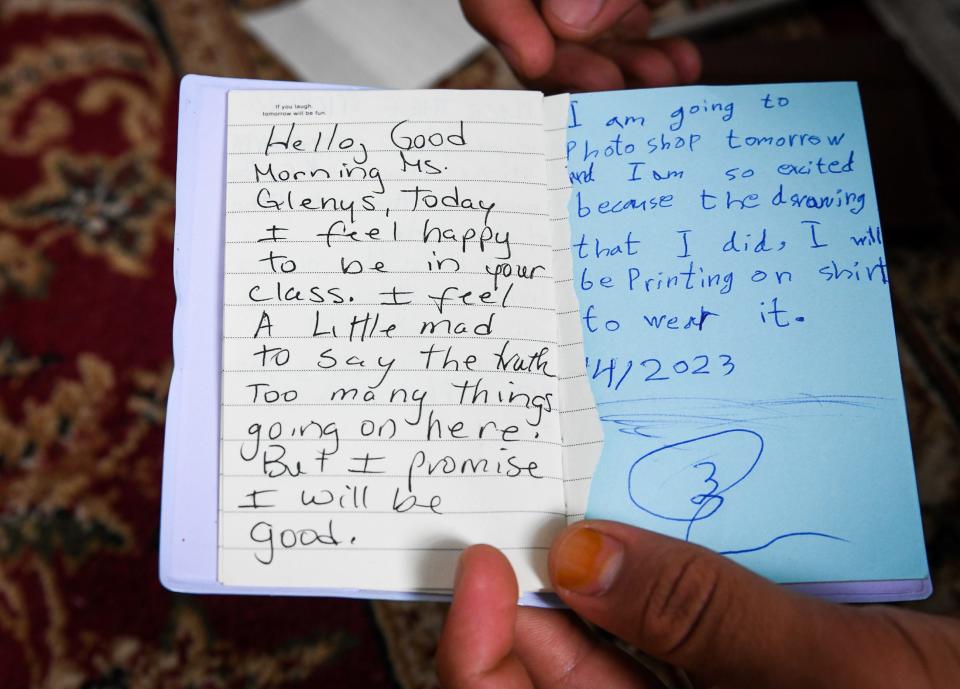
Mohammad was able to speak with his family during short phone calls. The calls assured him his family was still OK but were agonizing for Mohammad. He would retreat to his dorm after the calls and punch the walls and cry, he said, not knowing when he would see his family again. He didn’t even know the address of his shelter.
Children’s Village, which reports show has run a shelter for migrant children in Dobbs Ferry, New York, did not respond to questions about Mohammad’s care.
Weeks stretched into months. Mohammad initially wouldn’t interact with anyone. Slowly, he began memorizing English words and phrases. He would watch the other kids, mostly Dominican and Mexican, play soccer. A shelter official taught him how to play chess. Some of the other kids taught him Spanish and how to play basketball. He learned to say “hello” and “hola,” “I’m from Afghanistan” and “yo soy de Afganistán,” “what is there to eat?” and “¿qué hay para comer?”
Meanwhile, attorneys at The Door, a New York-based advocacy group that represents migrant youths, struggled to reunite Mohammad with his family. They were trying to figure out what would happen to the children and how to reunite them with their families, said Maya Jacob, a staff attorney who worked with Mohammad.
They found the government didn’t have a lot of answers.
“There was no actual plan,” she said. “The government was trying to figure things out as we went.”
How to reunite families?
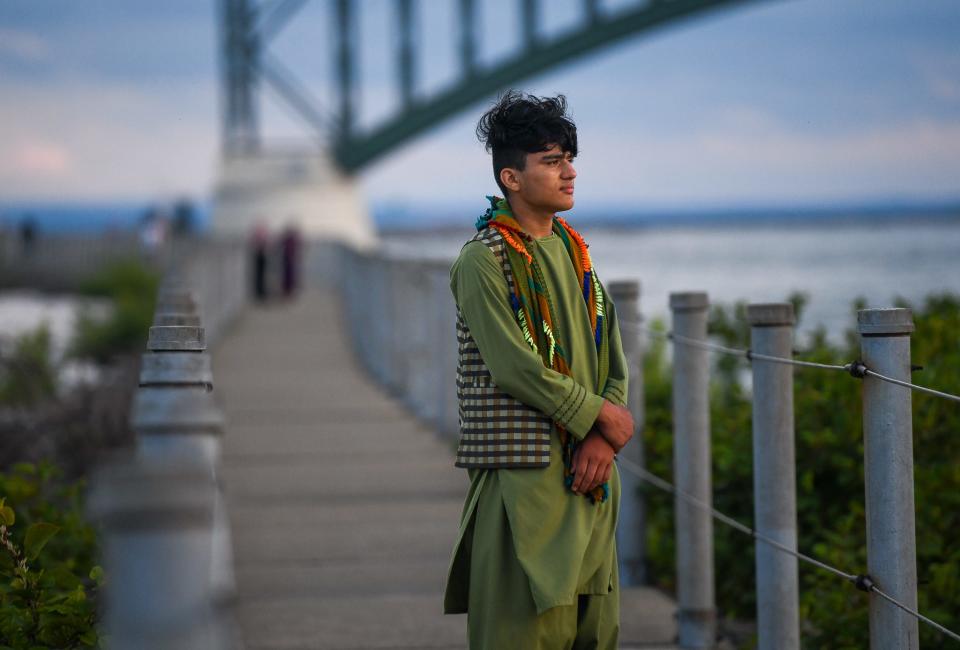
Since August 2021, U.S. authorities have said they support the reunification and resettlement of Afghan families.
Those who could show they worked for the U.S.-backed Afghan government or military and were vetted by U.S. officials were granted humanitarian parole and allowed into the U.S.
In November 2021, the State Department created an online portal with forms for Afghan families attempting to reunite. A special office in the department worked to seek out family members left behind in Afghanistan and bring them to the United States.
Details of how that worked, however, were not often publicized, given the sensitivity of the matter and the tenuous relations between the U.S. and the Taliban, advocates said. Of the 100,000 Afghans who have been resettled, the State Department won’t say how many remain separated from immediate family members.
“We have been actively pursuing all potentially viable options to reunite families quickly and efficiently,” the department said in a statement.
One of the biggest challenges: passports. Many Afghans didn’t have viable passports and the Taliban government was slow or reluctant to issue new ones, said Jennie Guilfoyle, a legal director with Vecina, an Austin-based immigrants’ rights group that has worked with unaccompanied Afghan minors.
Since August 2021, Vecina has worked to reunite six unaccompanied Afghan children in the U.S. with their families. So far, only three have been reunited.
“It’s been a very long process,” Guilfoyle said. “At this point, these very young children have been apart from their families and no one can say when they’ll be reunified.”
Even in cases where the government has moved children out of shelters and into the homes of relatives, advocates recognize the children’s ongoing trauma.
“They’re still living a life on the other side of the world from their families, and their families are still living in danger,” said Michael Hoyt, a supervising attorney with the Immigrant Children’s Protection Project at the National Immigration Justice Center, which has represented unaccompanied Afghan minors. “They’re still suffering.”
A family left behind
Rabia Hotak was sick with worry.
The Taliban had now regained control of Kabul, rumors of public executions and girls being barred from school were starting to seep through neighborhoods, and prisoners were being released from jails.
As if that weren’t enough to keep her up at night, her son, Mohammad Shams, hadn’t come home from his job at the hospital.
The next morning, Mohammad called from outside the airport in Kabul. He was going to try to make it on a flight out of Afghanistan and get them out, as well. Crying, Hotak pleaded with her son to return home. “Please, please come back home,” she told him.
His older brother, Momin Jan Shams, got on the phone and yelled and cursed and urged him to come back home. But Mohammad wouldn’t budge.
By the next phone call, he was in Qatar, waiting for his next flight. Again, Mohammad said he would send for them as soon as he knew where he was going.
Months went by. Mohammad called home, informing his family that he had reached the United States and was still trying to get them there. Hotak was skeptical.
“We didn’t have any plans, didn’t make any decision to go anywhere,” she said. “But Mohammad kept saying, ‘I’m going to make a case for you. I’m going to bring you all here to the United States.’ I didn’t believe he could do it.”
Then, in July 2022, the family received a phone call from a U.S. official who, through an interpreter, told them they were leaving on a flight out of Afghanistan. The family scrambled to get their passports updated and, a few days later, were on a flight to Qatar.
They spent two months on a military base in Qatar and then were transferred to a U.S. camp in Kosovo. The United States, grappling with a flood of people who needed out of Afghanistan but hadn’t yet been deemed safe to admit to the U.S., needed some neutral ground. Kosovo agreed to allow the U.S. military to house them there.
For the next eight months, the family lived at Camp Bondsteel: Rotak, 41; her husband, Mohammad Hakim Hotak, 68; and seven of her children, ranging in age from 5 to 21. Her oldest child, 23-year-old Bibi, who was married with three children of her own, couldn’t get the proper paperwork and stayed behind in Afghanistan.
At Camp Bondsteel, the family slept first in a large tent with other evacuees, and then moved to permanent barracks – a separate section for men, another for the women. They were provided with clothes, shoes, three meals a day, even a laundry room, Hotak said.
They were interviewed extensively and given vaccination shots. Hotak said she spoke with Mohammad nearly every day via WhatsApp video calls. Still, she worried incessantly.
“I thought, ‘Who’s cooking for him? Who’s doing his laundry?’” she said. “I just wanted to be with him.”
In New York, Mohammad prayed to be reunited with his family. “I told myself, ‘God is great,’” he said. “'Have patience.'”
Each Thursday, Hotak would visit an office on the base in Kosovo to ask about their status and when they would be reunited with Mohammad. In June, she made her routine Thursday visit and an official there told her they were headed to the United States the following week, Mohammad said. Soon after, they were on a commercial flight to Buffalo, New York.
“She called me and told me, and I was so happy and she was so happy,” he said. “I couldn’t believe it – my family was coming.”
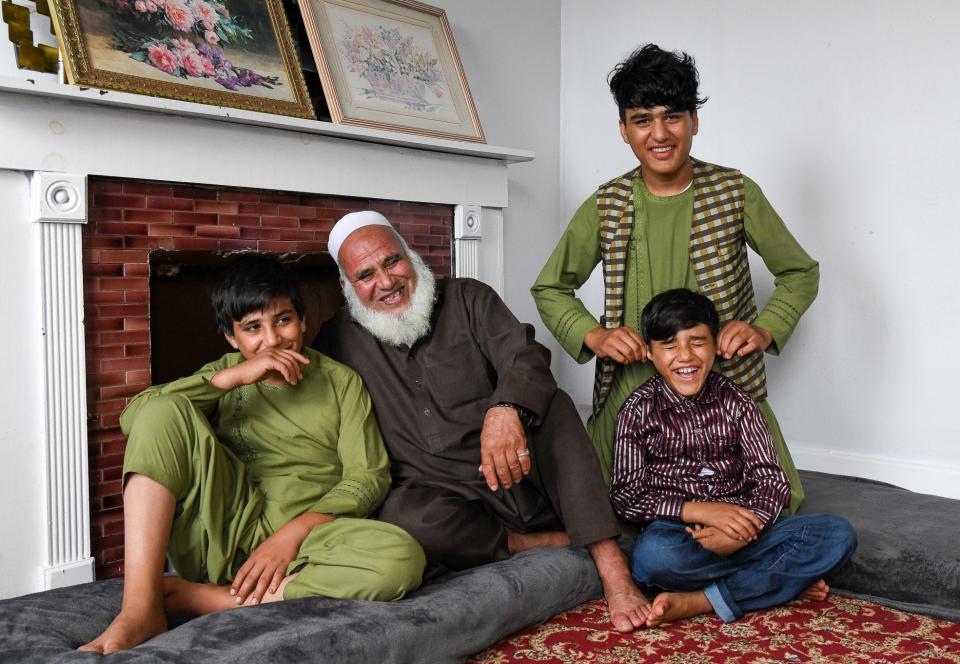
Twenty-two months after walking out of his home in Kabul, Mohammad was driven to a hotel just outside the Buffalo Niagara Falls International Airport and told to wait. Minutes later, his mother, father and eight siblings appeared in the hallway. The family collapsed into a group hug. Everyone cried.
“I was so, so happy,” Mohammad said. “I told myself, ‘God is good.’”
Life after the shelter
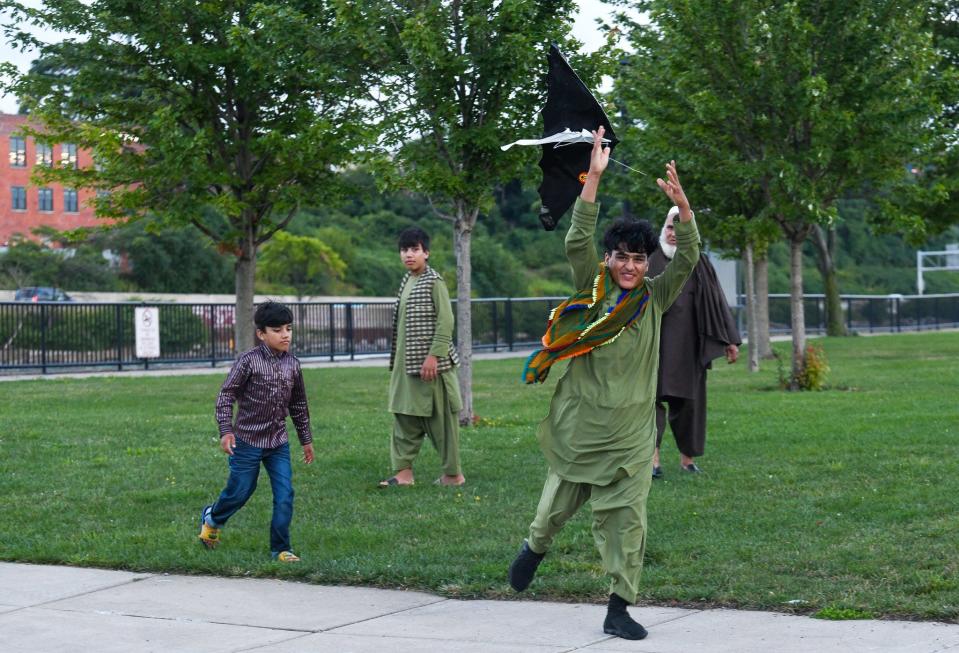
Today, the family lives in a subsidized four-bedroom home in the north end of Buffalo. Family members are still waiting on work authorization to be able to get jobs, and they’re often awakened at night by police sirens and loud fights on their street, they said.
Evacuated Afghan families such as Mohammad’s are usually on humanitarian parole, which allows them to be in the United States, and which could be renewed when it expires, said Hoyt, the immigration attorney. They don’t have a pathway to permanent status in the U.S., however, so they will have to apply for asylum along with other refugees, which could take years, he said.
A bipartisan bill introduced in the U.S. Senate last year, known as the Afghan Adjustment Act, would allow Afghan evacuees to apply for permanent residency if they submit to additional vetting. The legislation, however, has stalled in Congress.
“Living in limbo and not knowing your own future here,” Hoyt said. “That causes a lot of consternation for Afghan children here.”
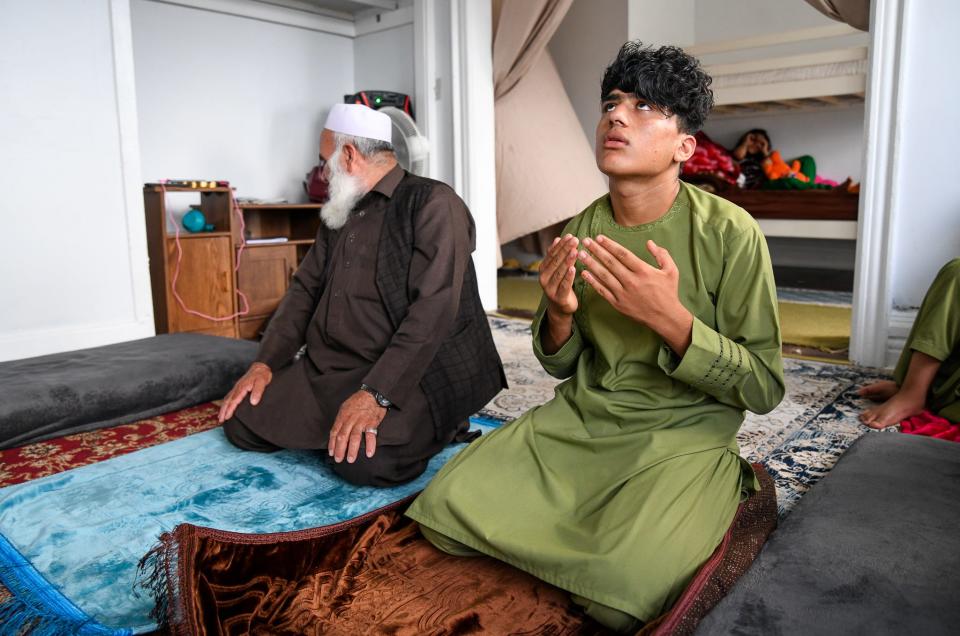
Mohammad’s family is also struggling to get his big sister, Bibi, and her three young children to the United States from Afghanistan.
Still, they’re optimistic about the future. Mohammad and his siblings will start school in the fall. Sara, now 9, still dreams of studying medicine someday. Irshad, 12, would still like to be a teacher.
Today, Mohammad speaks accented but understandable English and is semi-fluent in Spanish. As soon as he’s eligible, he said he plans to join the U.S. military and serve the country that harbored him and his family.
“The United States helped me a lot,” he said. “I want to help the United States.”
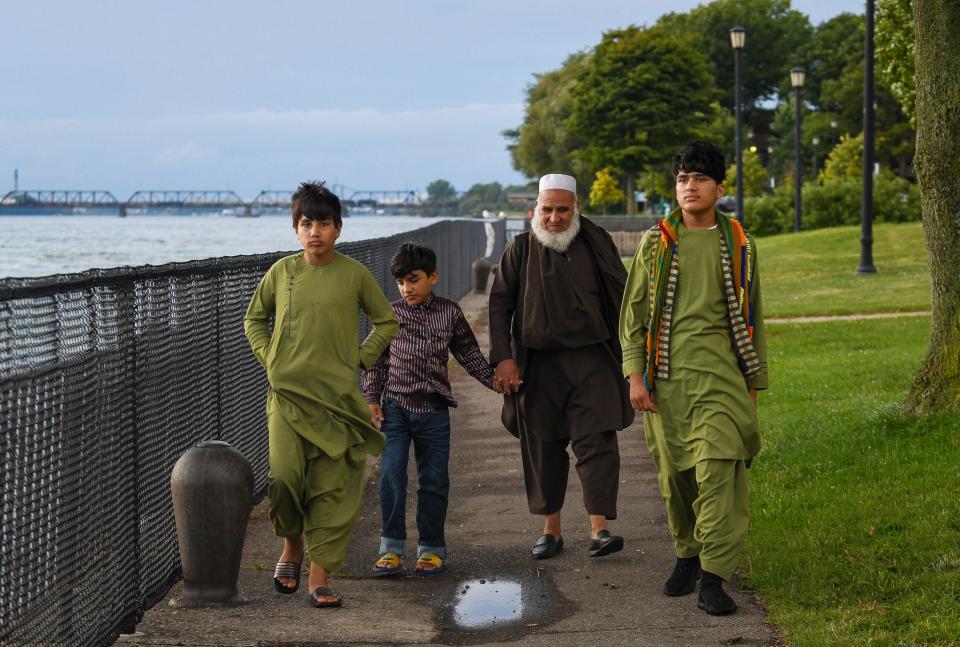
This article originally appeared on USA TODAY: How 12-year-old boy fled the fall of Kabul, ended up in U.S. custody

